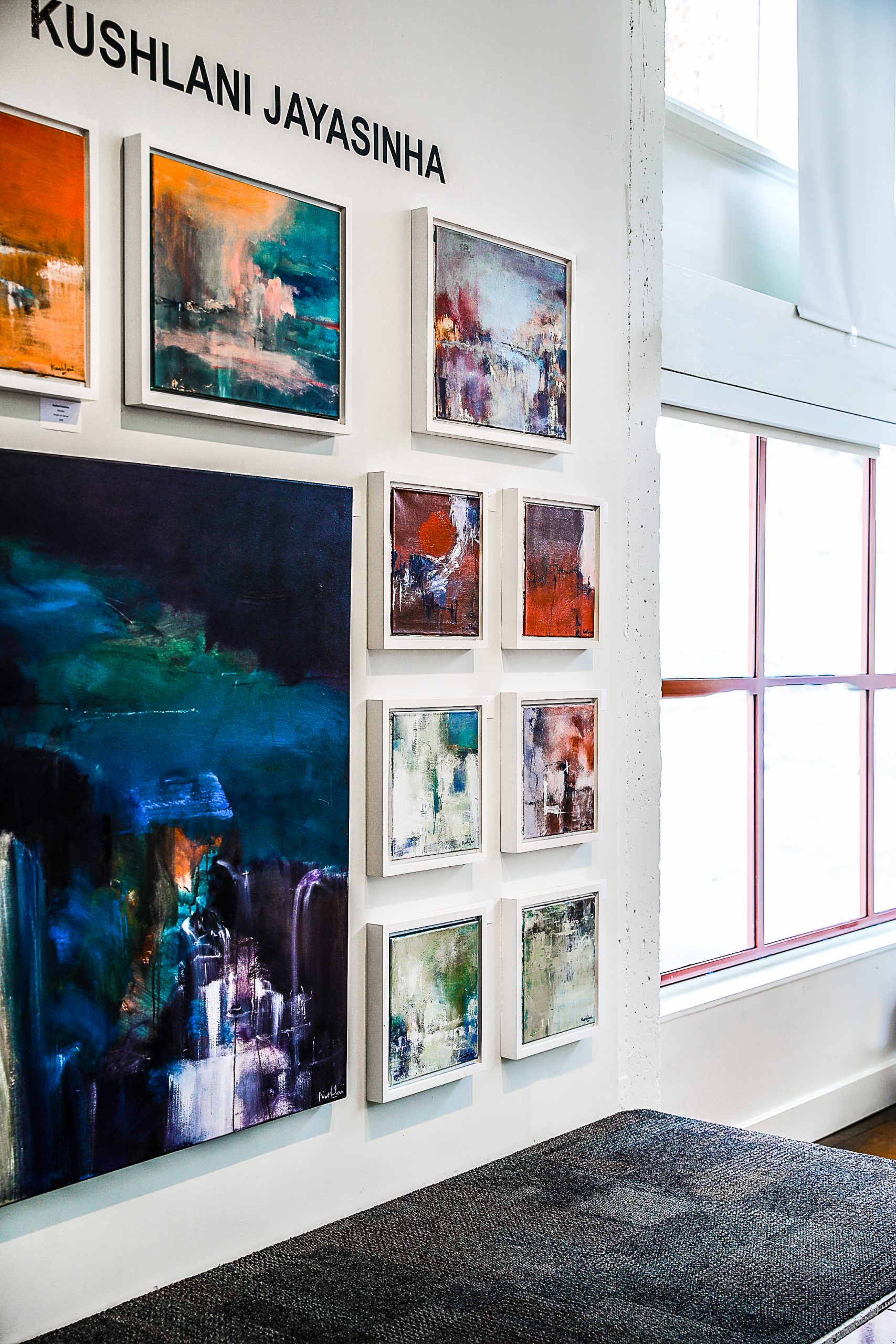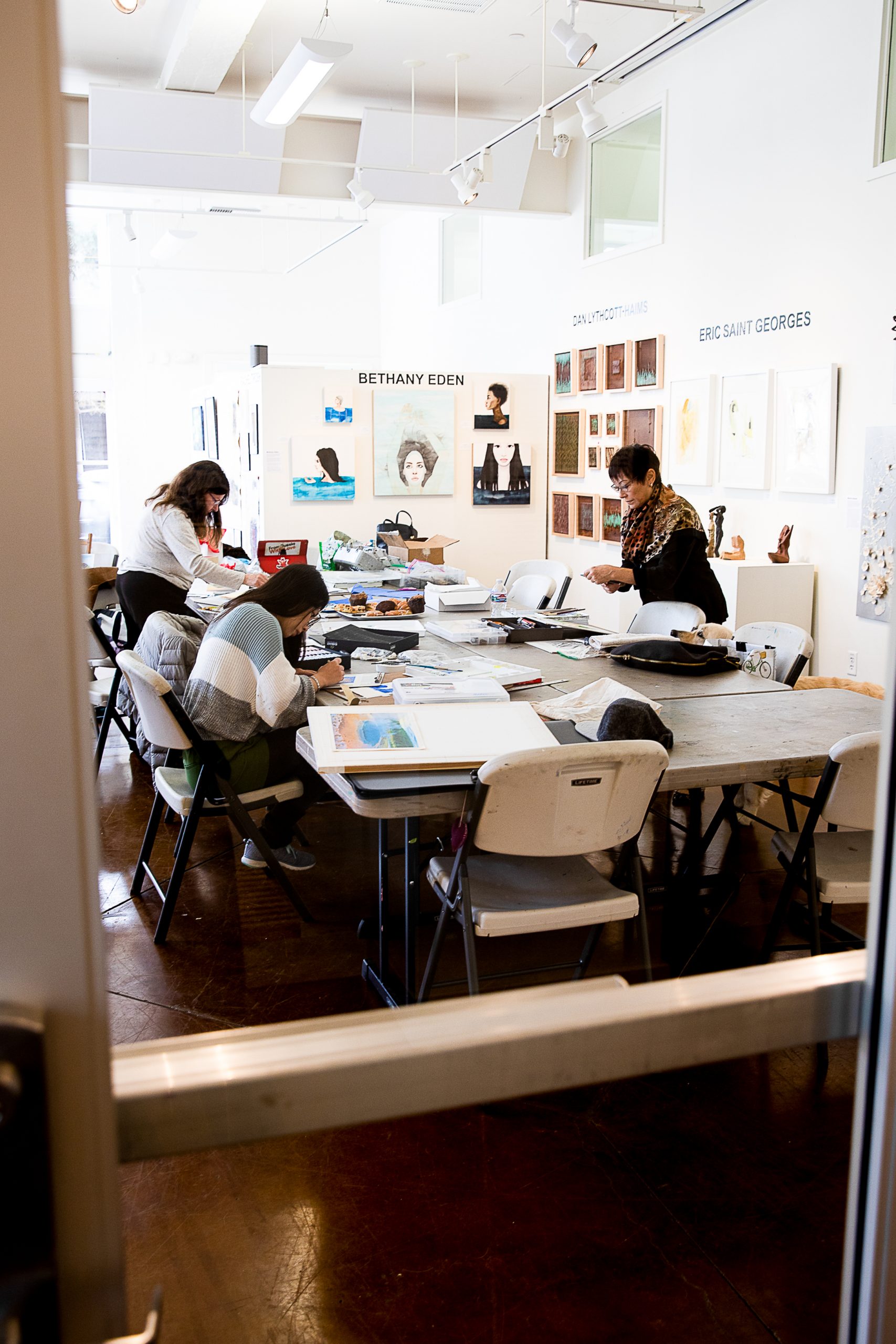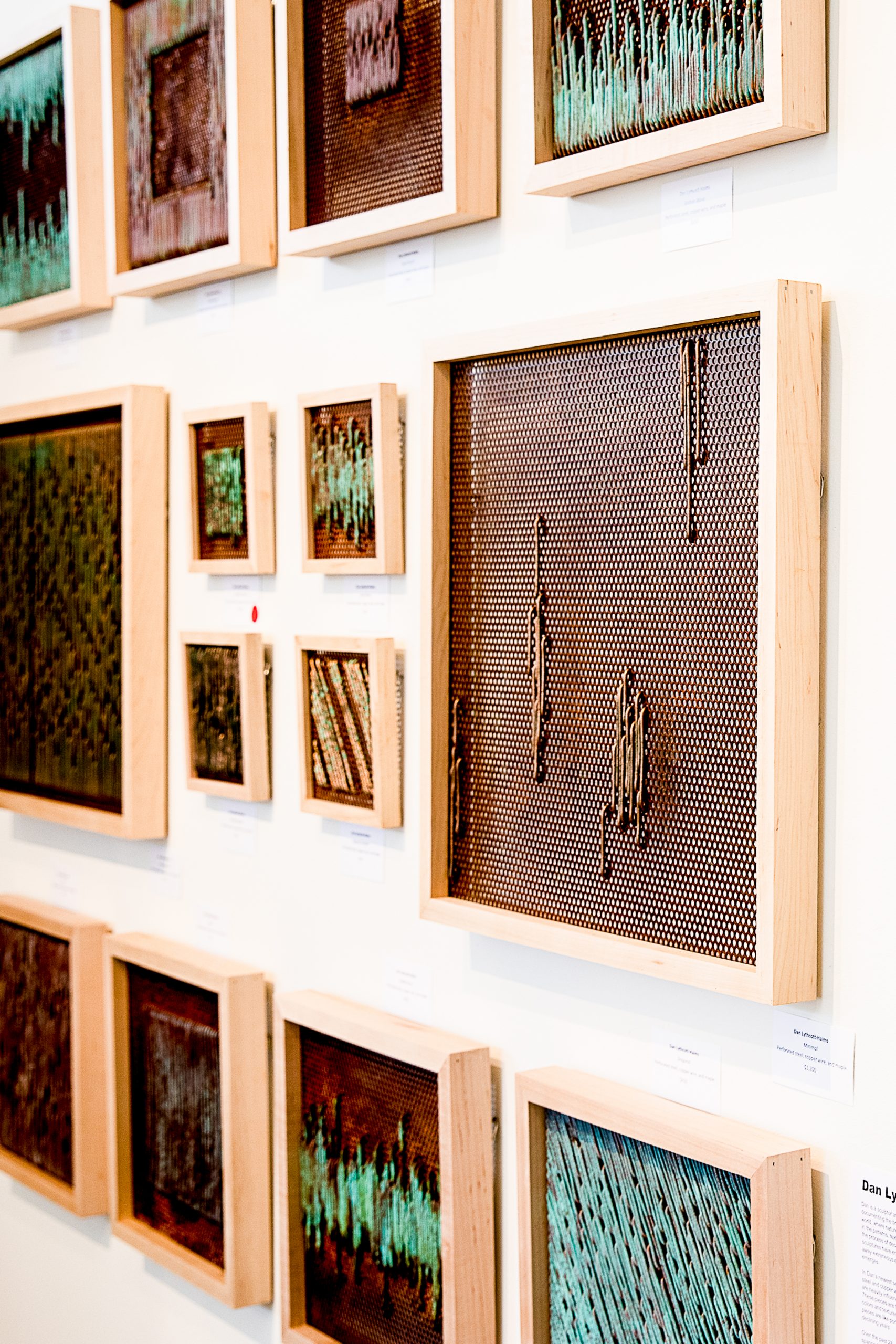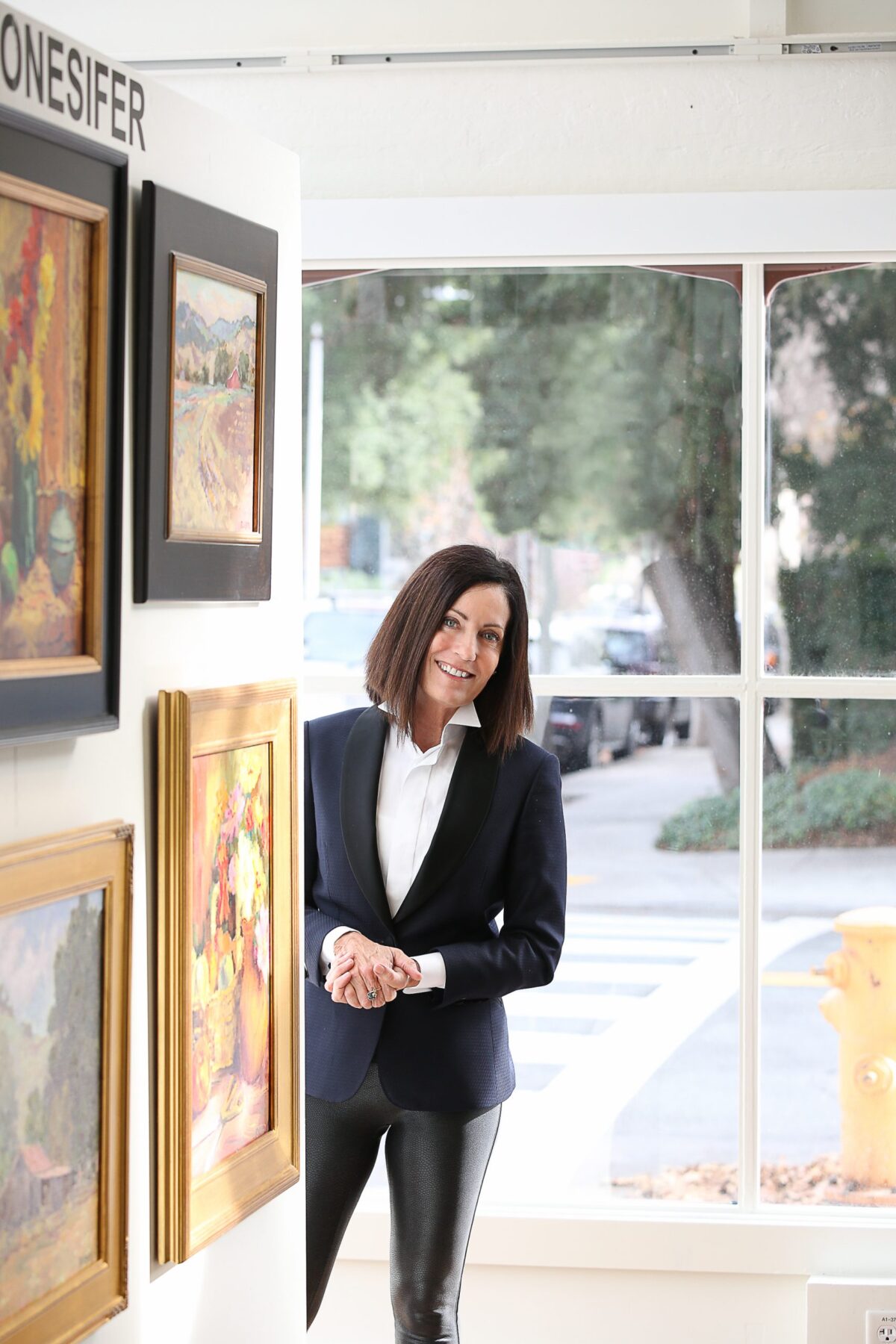The soothing melodies of Mozart drift throughout the Forest Gallery of the Pacific Art League (PAL) during Robin Scholl’s Tuesday morning class. The concerto complements the gentle scratching of pencils in mid-sketch. Robin, a teacher at PAL for nearly 30 years, strolls between her students to sprinkle tidbits of wisdom when needed. Sometimes, the learning reflects back onto the teacher.
“I love the students,” Robin effuses. “Over the years, because of the teaching, I realized that I’m growing, too.”
Robin counts herself among the many who have utilized the Palo Alto fine arts center to learn artistic technique, teach students and display their works of art. Now in its 99th year of operation, PAL’s newly-hired executive director Lisa Coscino is hoping to cement PAL as the Peninsula’s hub for artistic engagement.
“A world without art is actually a world none of us would want to live in, whether we consciously know that or not,” Lisa says. “Art affects our daily lives; art is in architecture, cars and programming.”
PAL offers a trident of artistic influence on the Peninsula: art classes, outreach initiatives and gallery space. PAL’s function as a gallery is the prong of the trident that Lisa is most focused on overhauling. “What we’re really trying to do now is give working artists an opportunity to earn a living,” Lisa says.
Emerging up-and-coming artists display their work at PAL’s headquarters in downtown Palo Alto and in exchange for wall space, the artists can either pay a membership fee or teach a class for PAL.

“Almost everyone knows who Picasso is by now but people don’t know who Michelle Louise is,” Lisa says, gesturing to Louise’s geometric yet chaotic paintings displayed on the Ramona Gallery wall. “And in order to become Picasso, you had to be Michelle Louise at some point in your life. Here is our opportunity to give everyone a chance as an artist who comes through our walls to have a career arc and start them off.”
Lisa adds that displaying emerging artists’ work helps address a certain wealth inequality plaguing the art community. A former private gallery owner herself, she says that price points on pieces by emerging artists are too low for private galleries to turn a profit. This system, in turn, prices out many people looking to purchase an art piece and leaves emerging artists underexposed.
Rather than subsisting on art sales, PAL is a non-profit primarily funded through membership dues and class fees. Therefore, PAL can afford to display emerging artists’ work and people coming from all backgrounds and interests can afford to buy the art they see on the wall.
“It is really rare in a city like Palo Alto to have a place where emerging artists can exhibit their work,” Lisa says.
Lisa wants exhibitions at PAL to center around the causes that artists engage with to improve the social relevance of the exhibit. She also wants more exhibitions to focus on a particular artist and demonstrate the journey of the artist.
“Michelle Louise might have beautiful paintings—but I want to know who she is and where she came from,” Lisa points out.
She then references the slips of paper, barely larger than an index card, that hang next to the artist’s work, providing scant background or meaningful insights. “Having this little bio isn’t really telling me enough,” she says.
PAL offers close to 70 classes a year for all degrees of artistically-inclined people. For example, Robin Scholl’s Tuesday course is a beginner-level class on landscape drawing in preparation for painting. Her Monday class on watercolor and oil painting is structured for advanced students—many of whom have been under her tutelage for over 20 years. PAL is also multi-generational and offers one- or two-day workshop courses for children.

In 2019, PAL rolled out their “beginner arts series,” designed for people who want to engage with art but lack some basic artistic skills necessary for some of the more rigorous classes. Lisa notes that this beginner curriculum was something PAL lacked for many years—many students are simply trying to scratch a creative itch that they otherwise cannot satisfy.
“There’s this desire for so many people to get away from technology and to get back to the basic, tactile kind of experience,” Lisa says.
PAL draws many students from the competitive corporate world that engulfs Silicon Valley. Even some of PAL’s artists/teachers hold demanding tech or medical jobs. PAL designs and hosts art classes for the likes of Facebook and IDEO, and Lisa is convinced that more artists are hiding in plain sight among these giant corporations.
“I find it interesting that so many people followed the corporate pathway because their family made them do it,” Lisa says. “And now that they have become adults on their own, they can go back to doing what they want to do.”

PAL’s sphere of artistic influence extends beyond its headquarters; instructors teach art classes at the Bill Wilson Center for at-risk youth and PAL organizes an art after-school program for the San Mateo Boys and Girls Club. PAL’s DREAM program, based in the Ravenswood School District in East Palo Alto, aims to enlighten kids to the connections between artistic expression and STEM fields of study.
While Lisa admires these outreach programs, she hopes the diversity in students taught by PAL ultimately translates to the walls of PAL’s gallery space. “Creativity is best supported by diversity,” she says. “Diversity in thought and from diverse backgrounds. This is what we’re going to bring into PAL.”


